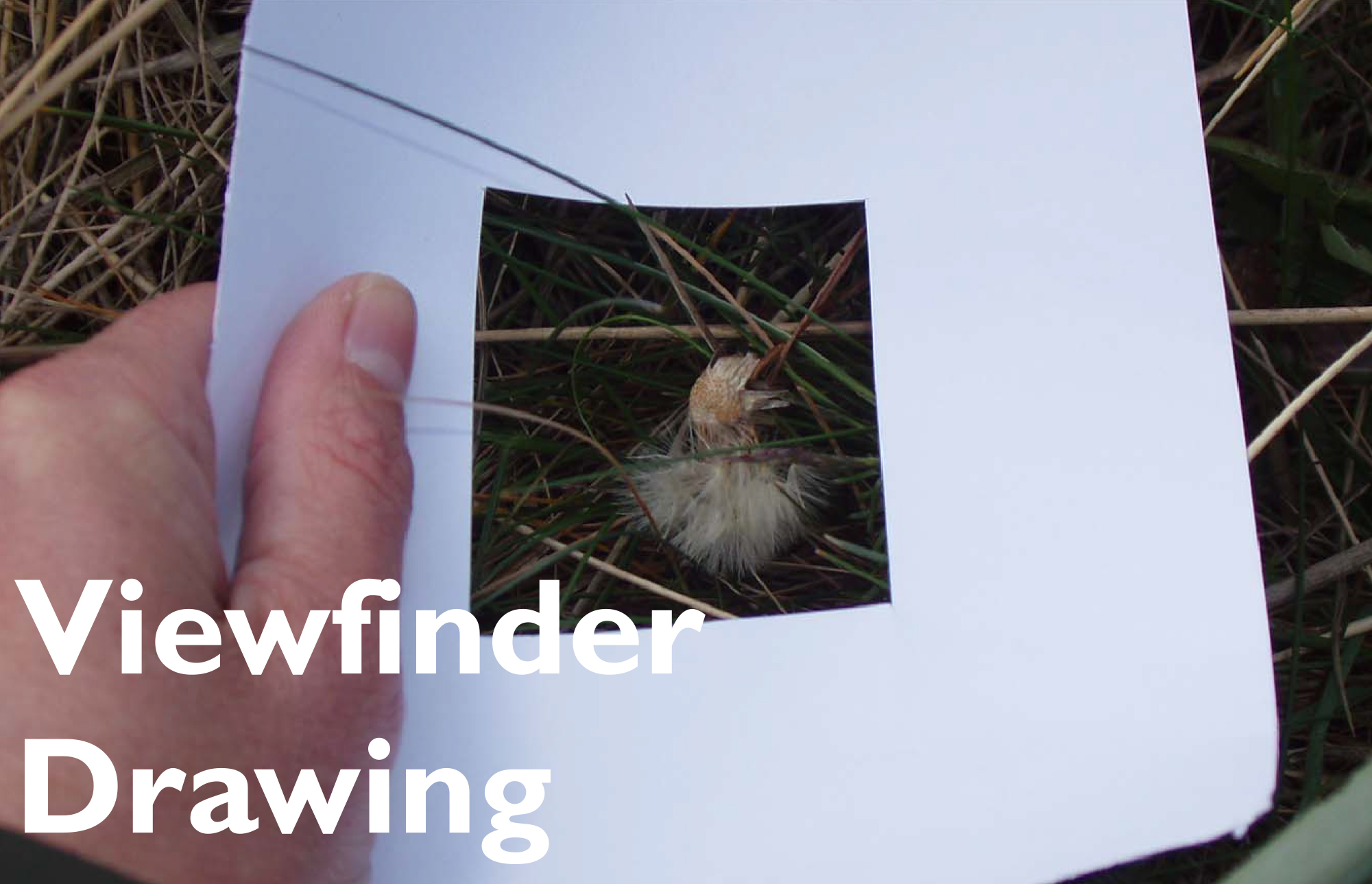In this activity, participants draw particular natural scenes isolated using card viewfinders. This has them practise close observation of the natural world, and apply the creative judgement and decision making to choose the views to isolate.
The Activity
Artform/Type of Activity
- Drawing
- Observing
Objectives/Outcomes
- To develop confidence in drawing as a way of recording visual information
- To gain better understanding of the natural environment through close observation
- To develop research and fieldwork skills
- To better understand scale and distance
Materials Required
- Card viewfinders – to be prepared before trip
- Clipboards – one per participant
- Cartridge or copy paper
- Range of graphite pencils: HB – 8B
- Colour pencils
- Sharpeners
Space Requirements
This activity is best done outside in the natural space, weather permitting. Outdoor classrooms and hides can be suitable, given good viewing areas and sufficient space.
Activity Instructions
- (Prior to workshop): viewfinders are to be made by cutting a small square or rectangular window out of a piece of stiff card, leaving a ‘picture frame’. Sizes can be approximately A5 and/or A6. You will need at least one viewfinder per participant.
- Artist/ Teacher/ Leader demonstrates use of viewfinder to encourage looking/ observation (possibly alongside use of binoculars/ camera/ magnifying glasses etc).
- A/T/L shows how viewfinder can be used to look at things close up and/or far away; explore and discuss the differences in what you see.
- Discuss different pencils eg HB and 6B – encourage participants to think about matching drawing materials to subject, eg soft pencils for misty distance, harder pencils for close up sharp edges.
- Participants are given clipboards, paper, pencils.
- What to look for? How to look? Where to look? What to draw? How to draw?
- A/T/L encourages participants to use the edges of the viewfinder window as the edges of a whole sheet of drawing paper, and also to draw squares/ rectangles for smaller pictures on other sheets of paper – exploring scale and composition. Can you hold the viewfinder up and frame part of the skyline – draw the distant view. Can you lay it on the ground to frame a leaf – draw one leaf.
- A/T/L encourages participants to develop their own approaches to drawing when recording visual information.
- A/T/L asks questions to develop observation skills: which areas are lighter/ darker? Which details are sharp and which are blurred? Is the surface rough or smooth? Is there a contrast in scale?
- Participants can be challenged to produce a number of varied drawings within the time given.
Curricular Links
Links to Art and Design through: use of observational skills and conveying visual information
Links to Science through: discovery and identification of habitats and wildlife
Links to Geography through: development of field skills and identification of the characteristics of specific areas
This resource was designed as part of the Green TV project.
PDF Work Sheet
See our A to Z of creative activity resources here.
Funded By
The creation of this resource was made possible by funding from the Heritage Lottery Fund.

